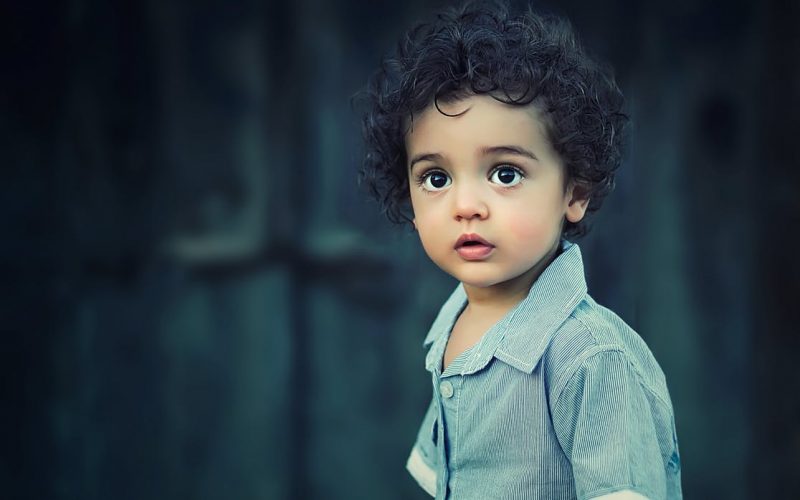Portrait photography is very different from all other types of photography and, of course, requires a certain approach. Clearly, capturing impressive portraits isn’t just about memorizing a few rules. But the tips that we have collected for you in this article will at least help you avoid the most common mistakes that beginners make. So we’ll be talking about:
- shooting technique;
- camera settings;
- lighting features;
- working with the model;
- composition.
By the way, if you are interested in portrait photography, we also recommend that you read Skylum’s article about black background portraits. Despite the fact that this publication is devoted to the rather narrow topic of a black background shooting, you can get a lot of useful information from there.
1. Technique
Any camera is suitable for shooting portraits. The advantages of an SLR camera are a quick response to commands, a change of optics that allows you to vary the shooting modes, the ability to shoot in manual mode, which means that you have many opportunities for solving your artistic tasks, and the ability to shoot in difficult conditions (for example, in dark premises).
Good portraits can be taken with compact cameras. But it’s better if your compact has a zoom (the longer the better – the background will blur more, and the proportions of the face will be better).
For SLR cameras, it is recommended to use lenses with a focal length of 50-80 mm (in some cases up to 135 mm). With a focal length of less than 50 cm, you will get distorted proportions of the model. When shooting a portrait, preference should be given to portrait lenses with soft-focus optics.
2. Settings
Portraits are usually shot with a shallow depth of field. This means an open aperture, i.e. small aperture values ??(better from f 2.8). If you are shooting with a compact, shoot at the maximum zoom position.
What will it give? The subject will be sharp and the background will be blurred. We must not forget about the distance at which you shoot and that the depth of field depends on this distance. Of course, it all depends on your artistic goals, but in a classic portrait, the eyes should be sharp and preferably the rest of the face of the person being portrayed. If you are shooting two people or a group of people and you want the whole group to be in focus, you need to close the aperture (f 8 – f 11 and more).
Exposure when shooting portraits should not be too long. It`s difficult for models not to move or breathe for a long time. So if the shutter speeds are too long, the photos will not be sharp. In addition, long exposures cause tension in the filming. At short shutter speeds, you capture the moment and everything that was intended is in sharpness (eyes, …). This is especially true for children who cannot sit quietly in one place. The faster the shutter speed, the more likely you are to get a sharp shot. When doing this, you need to make sure that you have enough light for shooting.
3. Light
In order to get not a flat, but a voluminous face in a photograph, it is best to use light falling a little from the front and side (front-diagonal lighting). In principle, good results can be obtained with side lighting, but in this case, it is better to use a reflector or an external flash. Shoot outdoors in the morning or early evening. If you shoot at noon when the sun is at its zenith, the overhead light will produce deep shadows and very sharp contrast.
With the help of backlighting, you can get a silhouette if you shoot, for example, in the evening. If you want to light up your face, you’ll also need a reflector or an external flash. But front lighting will flatten the face and should be avoided.
At home, it is best to shoot with light from the window (if possible, not from the sunny side). Transparent curtains will help you make the light diffused and softer.
4. Working with the model
Most people start “posing” when they see the camera. This rarely gives a good result, as portrayed during posing, as a rule, tense up. At the beginning of shooting, you can say that you are not shooting yet, but simply choosing a shooting point and setting up a technique. At this time you may capture the best shots.
A good portrait photographer must be able to communicate with people and love to do it. Only by liberating the model and looking into the soul of a person can you take an outstanding picture.

5. Composition
In portrait photography, all the classic rules of composition apply. Particular attention should be paid to the background. It should not distract from the model. So do not shoot on contrasting, bright, and colored backgrounds. Calm, plain backgrounds that do not distract attention are best suited. If you need a contrasting black photoshoot background, it is better to use the tips from the article about black background portraits from Skylum`s blog.
Do you remember the composition rule that says you shouldn’t place your main subject in the middle of the frame? This rule applies here as well, but in a portrait, it is very important that the frame is balanced. When filling the frame, it is very important to consider the direction of the model’s gaze. That is if a person looks to the left, then on the left, there should be enough space for a look. The gaze should not rest on the edge of the picture. The mood of the picture depends on the direction of view.
The bottom line
By following these simple guidelines, you can easily enter the world of portrait photography. We hope, that the article was useful to you, and we take our leave. Wish you inexhaustible inspiration and successful pictures.




